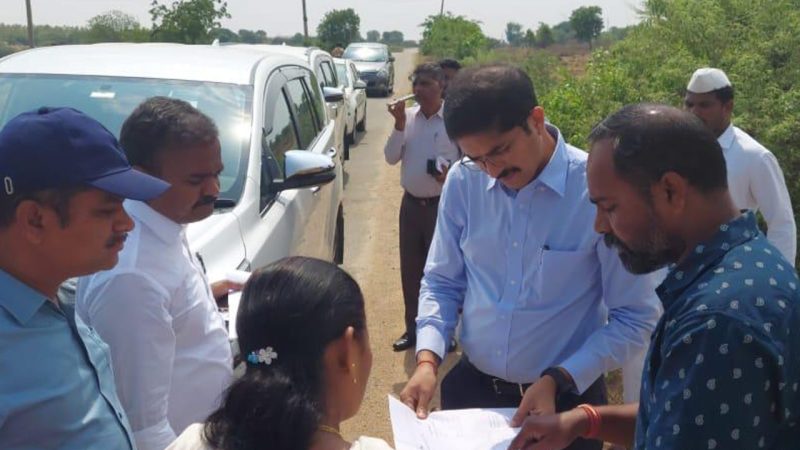Get ready with coding: The universal skill for Gen Z in US higher education

Let’s decode how coding is reshaping different disciplines in U.S. colleges and why it should be in your toolkit — regardless of your major.
Published Date – 17 May 2025, 04:52 PM

It’s 2025, and if you’re stepping into U.S. higher education without some knowledge about coding, you’re probably missing out on the biggest academic and career edge of the decade. Whether you’re majoring in biology, business, or the fine arts, universities across the United States are embedding coding into curricula as an essential 21st-century skill.
Let’s decode how coding is reshaping different disciplines in U.S. colleges and why it should be in your toolkit — regardless of your major.
Coding in IT/Software:
This is the original space for coding. From web development to cybersecurity, AI to game design — IT is powered by Python, Java, C , and beyond. Think of coding as the skeleton key that opens every tech career door. Reputed universities have made coding prerequisites for most tech-related programs. Even small liberal arts colleges offer app development labs open to all majors.
Coding in AI/Communication:
AI is transforming how we communicate — from chatbots to deep fakes, speech synthesis to real-time translation. Want to design the next Siri or build your own AI influencer? Learn how machine learning works via Python and TensorFlow.
Coding in Medicine/Pharma/Biotech:
Today’s doctors and researchers are using Python and R to analyze patient data, model diseases, and even run simulations for drug trials. Whether you’re into radiology, genomics, or personalized medicine, coding is the lens through which modern healthcare is being redefined. Imagine developing an AI model that can detect cancer in seconds.
At some undergraduate colleges, pre-med students are learning Python and R alongside organic chemistry. Biomedical informatics, AI-assisted diagnostics, and medical imaging require coding knowledge.
Coding in Finance/Business Analytics/Economics:
Every modern business runs on data. With Python, SQL, and tools like Tableau or Power BI, students are building dashboards, forecasting trends, and automating reports. Business schools across the United States have embraced coding as part of the core toolkit. Students use machine learning to forecast revenue. Coding is no longer a tech skill — it’s a business language. Economics departments now require or recommend coding courses, especially in R, Python, and Stata.
Coding in Design/Architecture:
Architectural design tools like AutoCAD and Revit are being enhanced by coding for parametric design and 3D modeling. Creative coders even generate real-time simulations to test structural integrity or energy efficiency. Architecture and design students are learning parametric design using Rhino and Grasshopper, both of which involve scripting. Coding enables real-time modeling, structural optimization, and sustainable design.
Coding in Remote Sensing/Geography:
Google Earth? GIS maps? Satellite imaging? All involve advance-level coding. At U.S. universities, geography majors use coding to analyze satellite data, build GIS models, and track climate change. Python with ArcGIS is now a required skill in remote sensing courses.
Coding in Library Science/Archives:
Gone are the dusty card catalogs. Today’s librarians code databases, design digital repositories, and use AI for content tagging and recommendation systems. Colleges offering Information Science or Archival Studies now teach students how to use Python, XML, and database languages to manage digital repositories.
Coding in Fine Arts/Film Production:
Creative coding is booming. Universities in the United States offer “Coding for Artists” electives, teaching languages like Processing and JavaScript for generative art, digital storytelling, and interactive installations. Film students script automation tools for editing, while sound designers code digital audio effects. The arts are no longer analog — they’re algorithmic.
Coding in Sports and Games:
From analyzing player performance to designing immersive esports, coding is shaking up the sports world. Coaches use data analytics to refine strategies, while game developers code physics engines for hyper-realistic gameplay. Students use wearable tech data, write code to visualize player analytics, and build immersive VR sports training tools.
Final Thoughts: So, What’s Next?
Universities across the USA — from community colleges to Ivy Leagues — are embedding coding into core curricula across majors. Whether through required courses, interdisciplinary minors, or hands-on project labs, coding is becoming as universal as academic writing.
You don’t have to become a full-time software engineer, but learning Python, R, or JavaScript can set you apart — in internships, in research, and in your job hunt.
Enroll in that intro coding class. Join a hackathon. Build a data story. create a digital portfolio. In the future of education and work, those who can’t code, can’t lead.
EducationUSA is the U.S. Department of State’s official resource for accurate, free, and up-to-date information about studying in the United States. The Y Axis Foundation is the only EducationUSA Advising Center in Hyderabad. Students can download the EducationUSA India app, available for free on iOS and Android devices, for the latest information about the college application process. Or visit https://educationusa.in/.
In Hyderabad, please visit
EducationUSA@Y Axis Foundation
S.L. Jubilee, Road No.36, Jubilee Hills,
Hyderabad-500033
Landline: 9000522000
Mobile: 91 9618680143 | 9618761143
Email: yaxishyderabad@educationusa.org
Website: https://educationusa.state.gov






